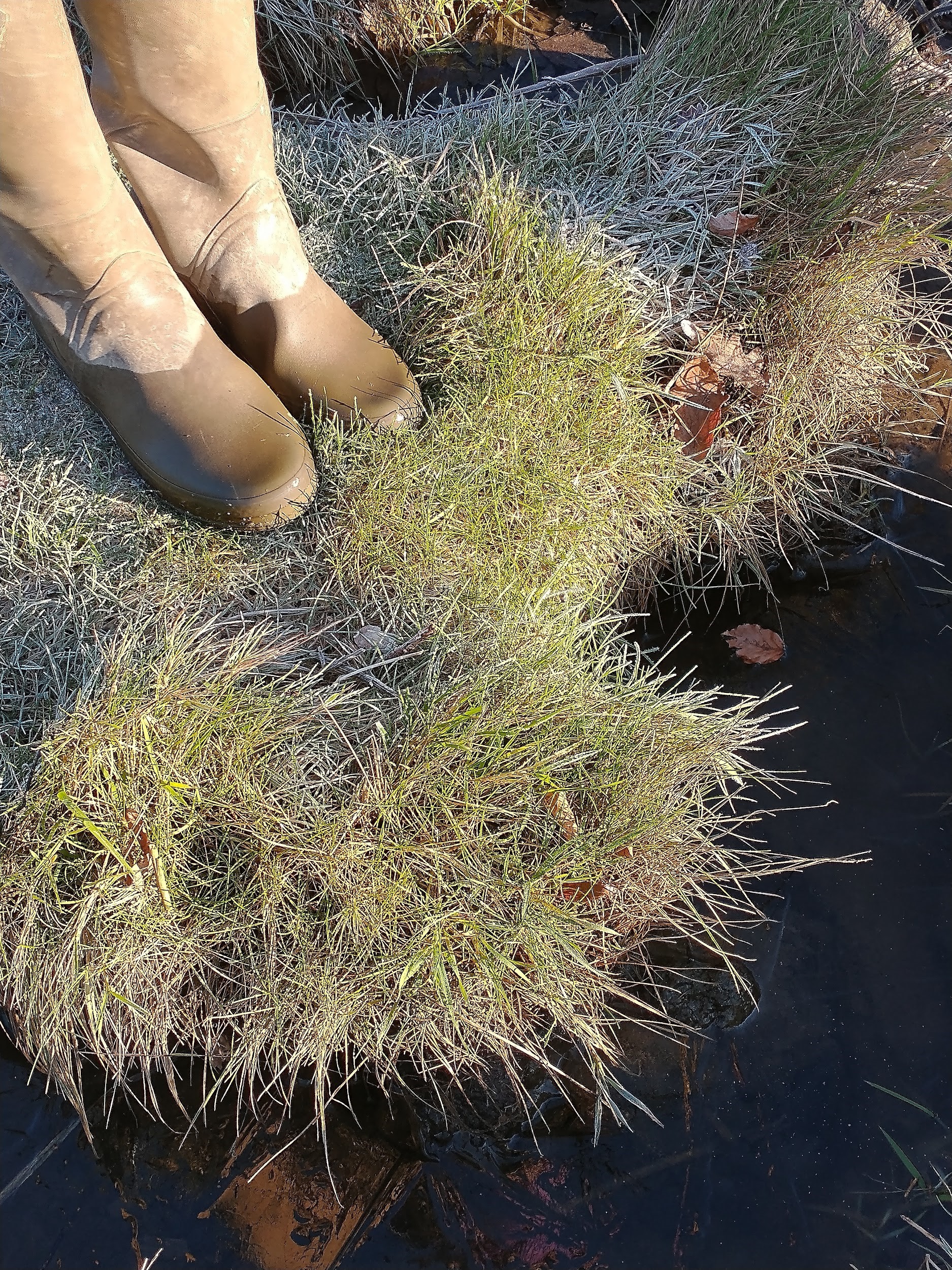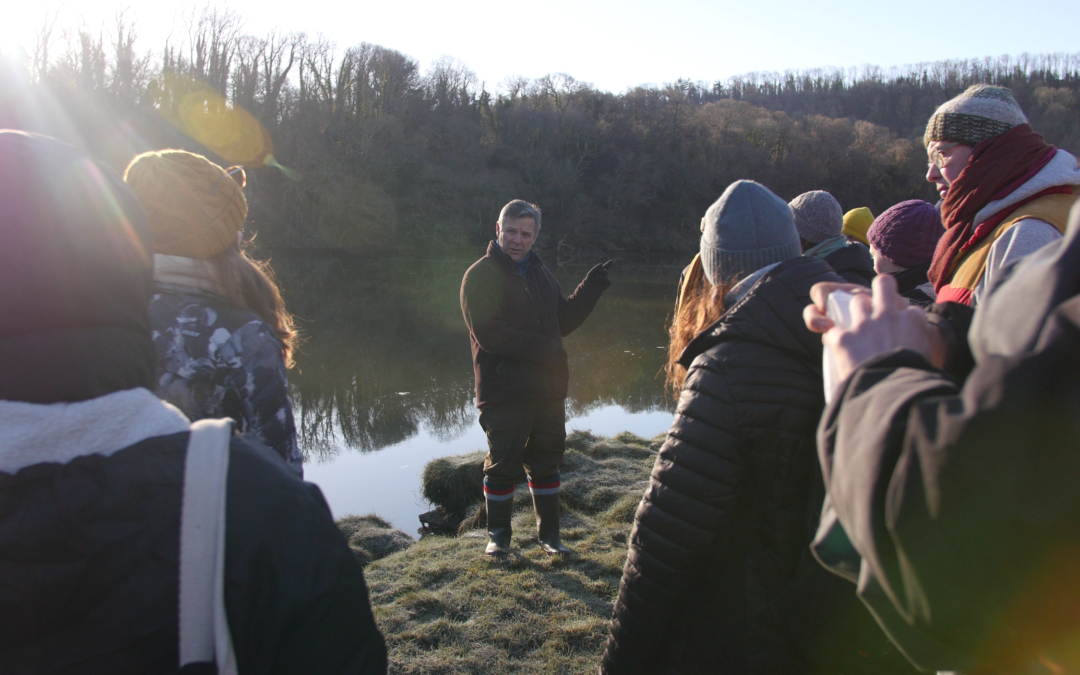Earlier this month, Schumacher College’s Ecological Design Thinking class joined BLC, Saltmarsh Project team members, Natural England’s Simon Tame and Sharpham Director Julian Carnell on a unique learning experience at Sharpham. They met down at the reedbeds to consider their condition, how much they have changed, whether sea level rise is noticeable, and other challenges of the sea/land interface, such as having humans and livestock as neighbours.
Tidal reedbeds are a particular type of saltmarsh, which in the case of Sharpham, are highly dominated by one species of reed. The visit marked the beginning of a dialogue about understanding the current state of the Sharpham saltmarshes and exploring the potential for occasional public access. The students played a crucial role, observing the intricacies of the project and witnessing collaboration in action on the ground.
Below are some reflections by Schumacher students after our day at Sharpham’s reedbeds:
“The saltmarshes at Sharpham really caught my imagination. Useful yet beautiful, fragile yet resilient, accessible yet off-limits… the potential of the salt marshes for biodiversity and climate activism alongside nature connection feels boundless. And the design problem: how to engage a local community with a place they cannot access? This trip provoked questions about conservation versus adaptation, co-habitation. I personally feel there is a lot of scope for controlled access to the saltmarshes. I envision monthly guided walks open to the public, with different foci: biodiversity trails for the scientifically-minded, poetry or sketching wanders for the creatives in the community, story walks for children, heritage basket-weaving workshops using the abundance of marsh reed lining the banks of the Dart… the list could go on. I walked away from our day with the salt marshes inspired by the potential for careful community engagement with their beautiful local ecosystem.”
~Rhosanna

“Wellies seemed like a good idea for a visit to the muddy flats of the saltmarshes at Sharpham. But the temperature that morning was minus 3 degrees and the dew had formed frosty circles in the grass. Walking over this ecotone definitely wasn’t the sticky, slurping, muddy experience I had expected. The ice-hardened ground meant that it was more like navigating over rocky terrain, which was interspersed, here and there, with half-frozen pools of salt water glistening under the winter sun. The saltmarshes are that rare liminal space between grassy fields and estuary, beautiful, inspiring and consoling; a place full of rich biodiversity and ‘blue carbon’ storage. Learning of the intricacies and systemic complexities surrounding the care and protection of the salt marshes, and how community engagement is invited and delivered was an excellent opportunity for an ecological design student. It really was an enjoyable walk, except for one thing – my frozen feet.”
~Debi

“Before Isabel visited the studio I had very little knowledge of saltmarshes – at school we were taught all about mangroves in Florida but nothing about the wetlands and marshes on our doorstep. Imagining a marsh conjured a picture of a swampy, barren landscape that was a challenge to connect with. My impression dissipated as soon as I set foot on the Sharpham saltmarshes – the site is breathtaking! As a designer, this shift in perception was really important: the visit was an opportunity to forge a thread of connection in place, and this encounter opened up a desire to care for it. During the trip we found out that whilst attendees of retreats at Sharpham could access the saltmarshes, members of the local community were now unable to step foot in this special place. The unequal application of these restrictions on access made me feel very uneasy, especially as the regeneration of this ecosystem depends on local people. If communities cannot connect with nature, how can they be expected to advocate for it by those with access and power to act as stewards for these places?”
Jemima

